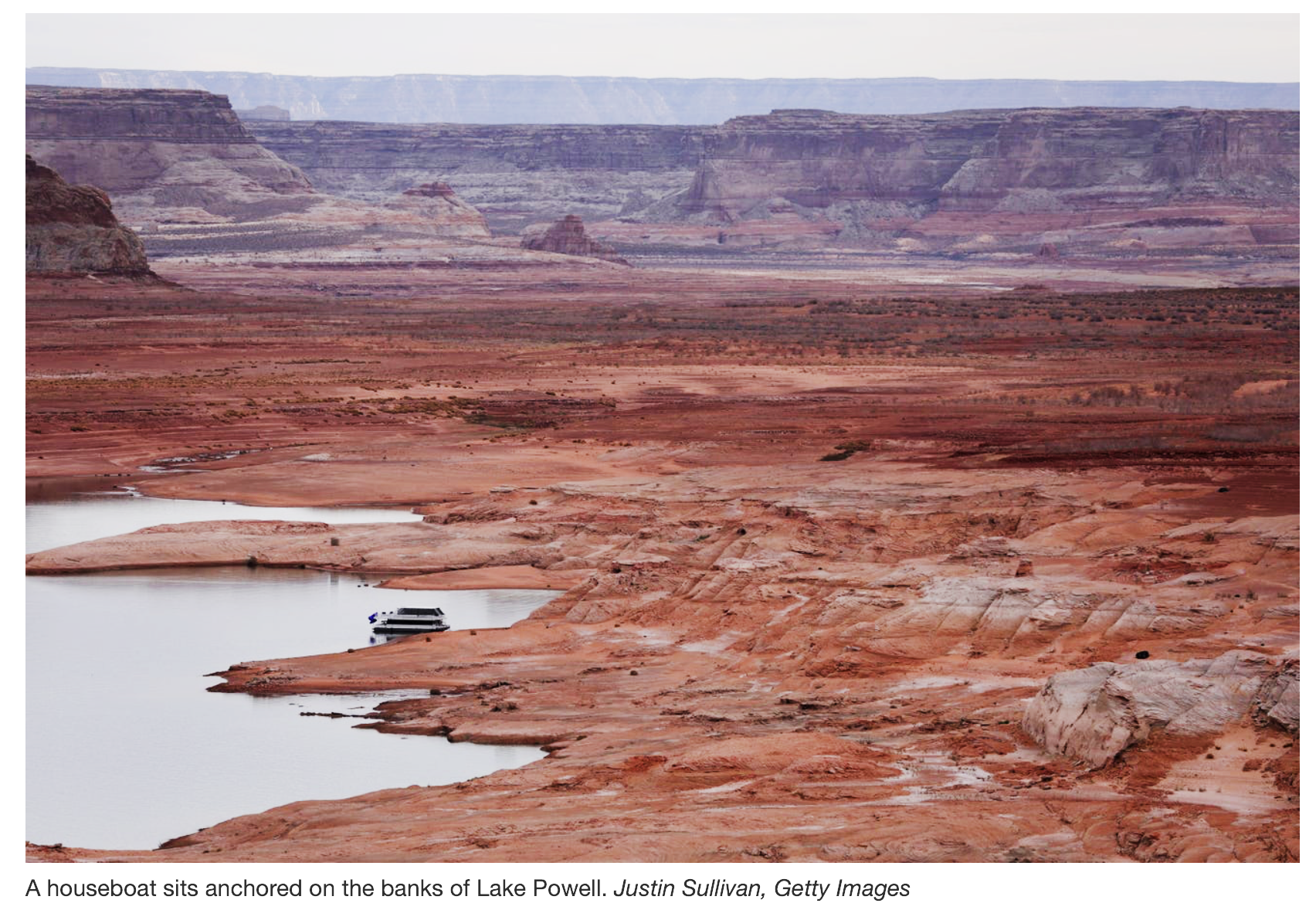Opinion: Lake Mead and Lake Powell are tanking, forcing Colorado River users to radically slash demand quickly. Here’s what we know about how that might play out.
By Joanna Allhands |Arizona Republic
The seven states that rely on the Colorado River must come up with a plan to cut 2 to 4 million acre-feet of water use.
By mid-August.
And if they don’t, the federal Bureau of Reclamation will act for them.
It’s a massive amount of water to find in a short amount of time.
And there are more questions than answers about what this entails. But let’s walk through what we know.
Could the Colorado River dry up?
Maybe. Depending on how you define “dry up.”
It’s doubtful that all 1,450 miles of the Colorado River will turn to dust, even if we drain Lake Mead and Lake Powell, the nation’s two largest reservoirs. But larger stretches could go dry for all or parts of the year if the lakes tank, creating ecological disasters in places like the Grand Canyon.
The problem is one of supply and demand: We use far more water than the river now produces. Even though we’ve had close to normal snowpack in recent years, warmer temperatures, earlier runoff dates and dry soils parched by drought have left us with far less water flowing into the reservoirs.
Which is depleting them. Fast.
What if the lakes reach ‘dead pool’?
Lake Mead and Lake Powell are now so low that there is risk of falling into what is called “dead pool” – meaning reservoir levels are too low to pass water through the dam. If Lake Mead were to reach dead pool, for example, no water would flow downstream past Hoover Dam – cutting off Colorado River water to anyone in Arizona or California for all or parts of the year.
But there are major problems to avoid long before we reach dead pool, particularly at Lake Powell. It involves a relatively higher lake level called “minimum power pool,” which is the point where turbines at Glen Canyon Dam can no longer generate hydropower.
The larger problem isn’t necessarily the loss of power – it’s that millions of acre-feet of river water must then be funneled through four smaller pipes that are encased in concrete within the dam.





